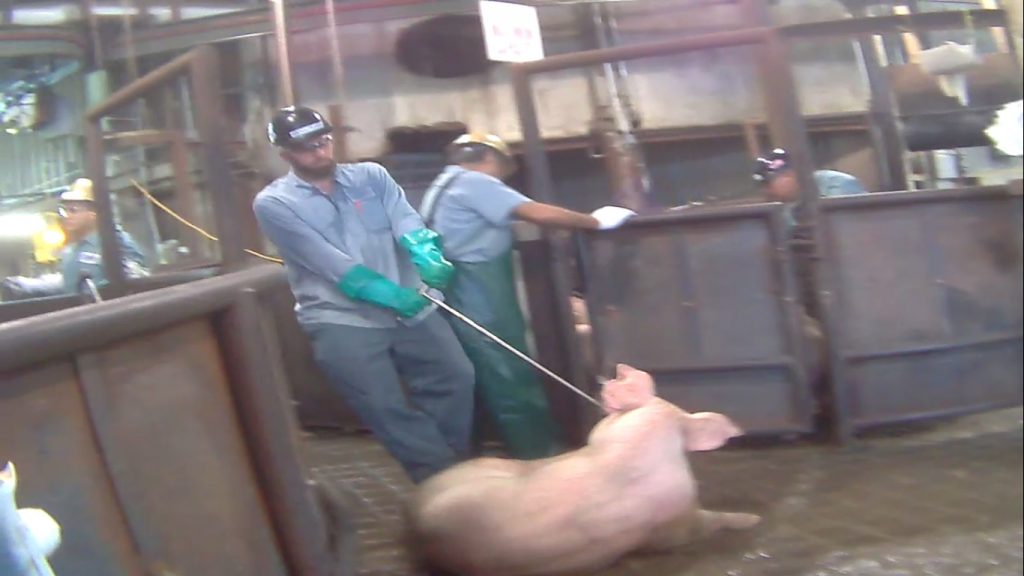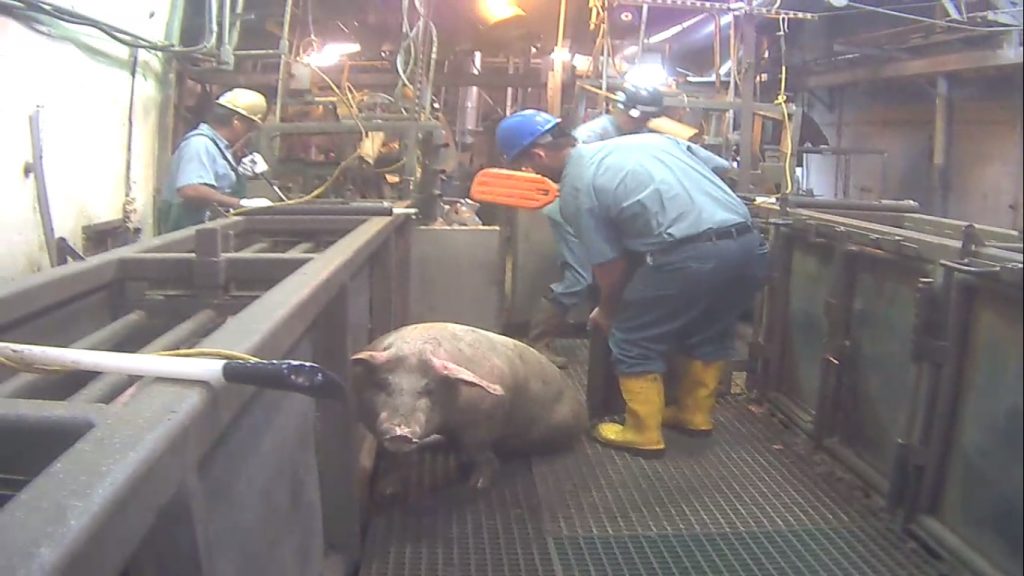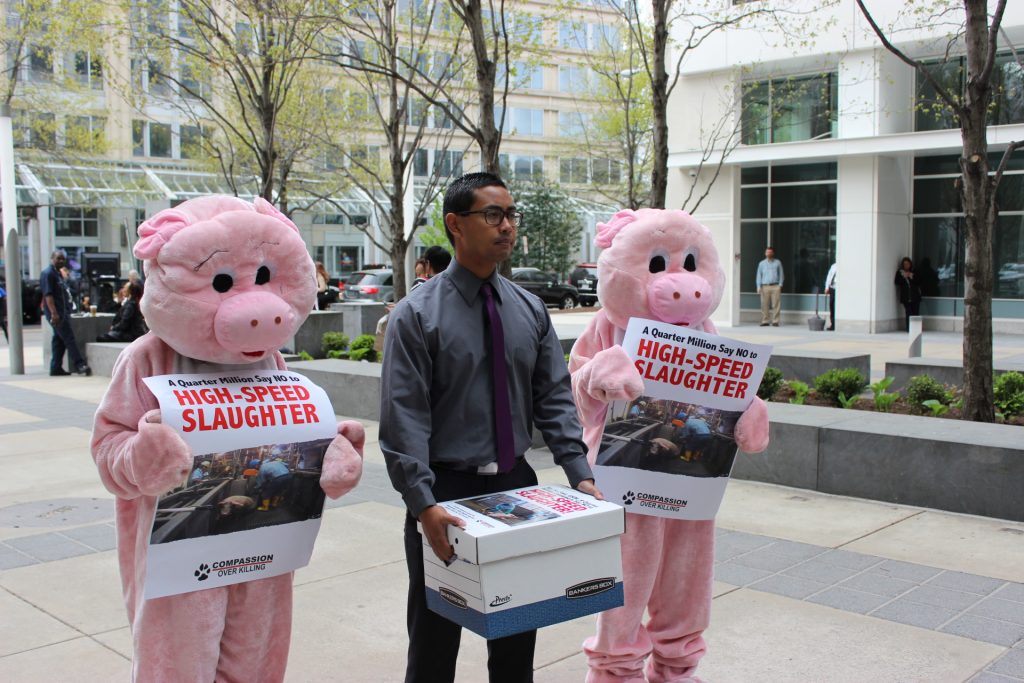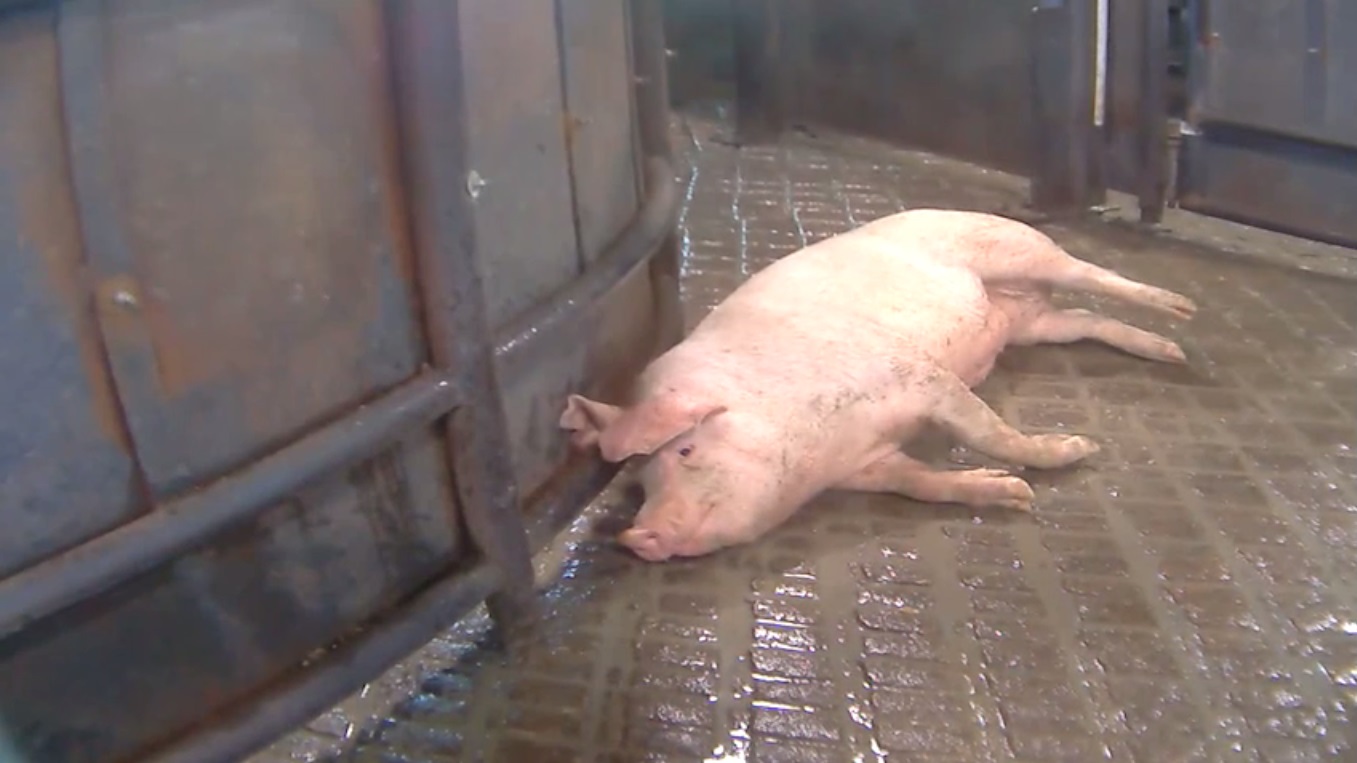Photos courtesy of Compassion Over Killing
His name is Scott David. But in 2015, when millions laid eyes on the footage he collected inside Quality Pork Processors (QPP), one of the fastest pig-killing facilities in the country, he was known to the public only as “Jay,” an anonymous undercover investigator for Compassion Over Killing (COK).
QPP is a pilot plant for the United States Department of Agriculture’s (USDA) proposed New Swine Slaughter Inspection System, which essentially allows plants to kill pigs as fast as they want and replaces government inspectors on the kill line with employees of plants themselves–who have a vested interest in keeping the line running as fast as possible in the name of profit.
If the USDA has its way, this program will be rolled out nationwide–and we only have until May 2 to stop that from happening.
Inside QPP, Scott had a name. But they–the pigs–didn’t. And the suffering he saw is haunting: Workers, rushing to keep up with the fast pace, often dragged, prodded, and hit the terrified animals. Many weren’t stunned properly–and Scott even saw pigs regain consciousness after having their throats cut open. Yet they still moved down the slaughter line–without it ever stopping.

QPP’s Animal Welfare Supervisor even acknowledged that these pigs sometimes regained consciousness after stunning: “You want to stick them as soon as possible, otherwise they have the risk of returning …. Sometimes they come back, like zombies.”
Not much seems to have changed at QPP since Scott’s investigation. According to 2017 USDA records, this same high-speed slaughter plant was found to repeatedly be forcing pigs to move faster than normal walking speeds. The records note that the plant had even received multiple warnings about this issue during weekly management meetings.
And late last year, a Clemens Food Group slaughterhouse in Coldwater, Michigan, was quietly granted a waiver by the USDA to become the newest plant operating under this program–without the opportunity for public comment. Industry publications projected that the plant could kill 1,500 pigs every hour, but government records reveal that not even two weeks after the plant increased its line speeds, it lost “process control” and had to slow down.
Opposition to the program has even come from within the USDA itself. According to a USDA inspector who worked inside one of these plants: “On numerous occasions, I witnessed [plant employees] fail to spot abscesses, lesions, fecal matter, and other defects that would render an animal unsafe or unwholesome.” The inspector further explained that without incentive, these plant workers “don’t actually want to shut off the line to deal with problems they spot on the job. … Obviously their employer will terminate them if they do it too many times.”
And a 2013 report by the USDA’s own Office of the Inspector General stated that these “plants may have a higher potential for food safety risks,” and concluded that the “program has shown no measurable improvement to the inspection process.
After watching Scott’s footage, the USDA’s Office of Investigation, Enforcement, and Audit concluded that “evidence collected illustrated that the establishment was not in compliance with the regulations,” and stated that if the agency’s inspectors had witnessed these actions, “they would have resulted in immediate regulatory action against the plant.”

The government’s own words reinforce the need for increased government oversight of slaughter plants instead of important duties being shifted to these plants’ employees.
In 2016, 60 members of Congress wrote to the USDA, stating that the agency “has not demonstrated that its hog slaughter pilot program actually reduces contamination, and therefore illness, rates. To the contrary, the available evidence suggests the [pilot program] will undermine food safety.”
Unfortunately, even workers are not immune to suffering in this high-speed hell. The congressional letter also highlighted a Human Rights Watch report that cited high line speeds as the greatest contributor to worker injuries in slaughter plants, already widely recognized as one of the most dangerous workplaces in America.
In a recent piece in The Guardian, Scott David appealed to the USDA: “Halting the expansion of the dangerous pilot program and bringing it to an immediate end is the only conscientious and compassionate choice for the USDA, a federal agency that has the opportunity, and the responsibility, to put animals, consumers, and workers above powerful pork industry interests.”
And this week, Scott visited the USDA in person to deliver the more than a quarter million signatures that his petition has collected against this program.

We only have one week left to stop this nationwide threat to millions of American consumers, pigs, and workers. But you can help drive home the message to the USDA that a slaughter rate of more than one pig every 5 seconds is simply dangerous and inhumane: Submit your comment by May 2!

